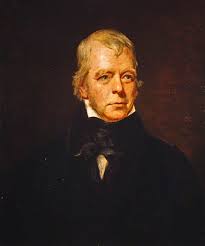 Known for popular historical novels such as Ivanhoe and The Pirate, writer and poet Sir Walter Scott was born in Edinburgh, Scotland, in 1771. He is notable in that he was popular throughout his lifetime and earned an international reputation that was highly unusual for the time. Many of his works are still seen as classics today and they have been filmed and serialized on TV for audiences across the globe.
Known for popular historical novels such as Ivanhoe and The Pirate, writer and poet Sir Walter Scott was born in Edinburgh, Scotland, in 1771. He is notable in that he was popular throughout his lifetime and earned an international reputation that was highly unusual for the time. Many of his works are still seen as classics today and they have been filmed and serialized on TV for audiences across the globe.
Apart from his literary genius, he was also a lawyer, an adept politician, and an influential member of the Highland Society which was founded 1784.
After recovering from polio when he was a child, Scott was sent to his grandparents in the Scottish countryside to convalesce where he learned to read under the tutelage of his Aunt. He also became enraptured by the oral tradition of the Scottish Borders and learned many of the tales that would become part of his literary work.
By 1778, Scott was back in Edinburgh, going to school and reading widely but also learning about Scottish history from James Mitchell. From there he went on to read the classics at the University of Edinburgh where he met poet Thomas Blacklock. Scott began to study law to follow in his father’s footsteps as a solicitor and in 1792 he became a member of the Faculty of Advocates.
His writing career began with translating a number of works from German into English. In 1797 he married Charlotte Charpentier and they had five children together. He was enjoying success as a solicitor and in 1799 became Deputy Sheriff of Selkirk. In 1805 his poetry began to gain a public following after his friend, James Ballantyne, began to publish some of his work. The poem that pushed Scott into the limelight was The Lay of the Last Minstrel which told an old story of love and intrigue in the Scottish Borders.

The following ten years were a prolific period for Scott and he published many more poems with the help of Ballantyne, including The Lady of the Lake and Marmion. He became a partner in Ballantyne’s printing business and helped to create the Quarterly Review for the Tory party that was used as an expression of his political views.
Not satisfied with just writing poetry, Scott turned his hand to stories and novels, trying to bring to life the legends and tales that he had heard of the Scottish Borders in his youth. He published Waverly, a tale set in the Jacobite Rebellion, anonymously, and that was followed by various other novels such as Tales of My Landlord. Scott’s background as a lawyer served him well in his writing and he remained anonymous for a while, thinking that novels were a lesser form of writing than his popular poetry.

He moved away from Scotland for perhaps his most famous work, Ivanhoe, which was published in 1819. It was an immediate success and was translated into many languages, gaining Scott an international reputation. His reputation was further enhanced when he was asked by the Prince Regent to recover the Crown Jewels which had been lost after the coronation of Charles II. With a small band of officers, Scott discovered them buried in Edinburgh and was asked to create a pageant to celebrate the event.
But storm clouds were just around the corner. In 1825 there was a worldwide banking crisis and the printing business he had invested in heavily failed, leaving him owing £130,000. Scott was determined to write himself out of debt, but his health was beginning to fail and in 1832 he passed away still owing money.
His books continued to sell after his death, though, and shortly afterwards the debts were paid off.

